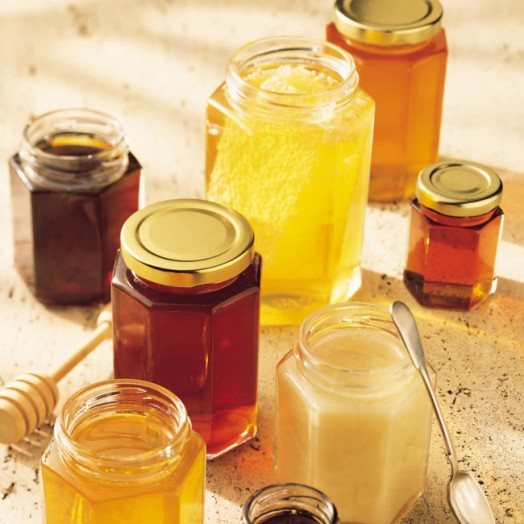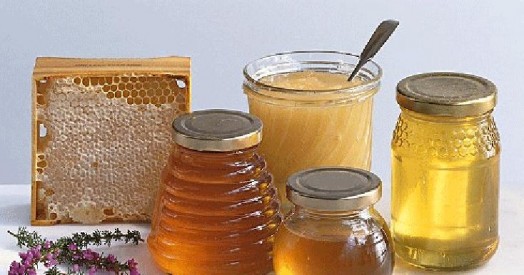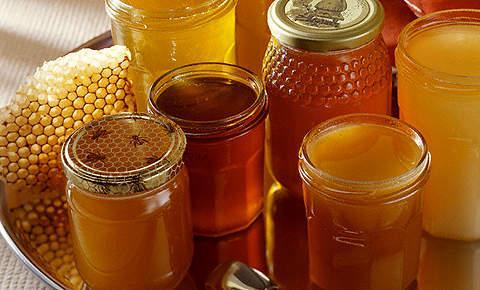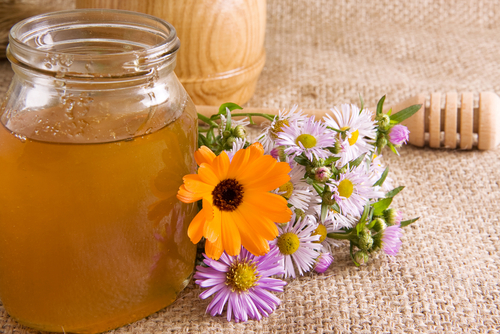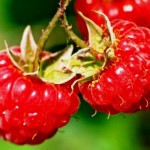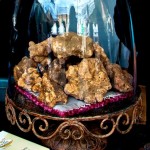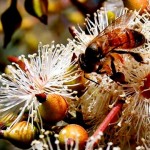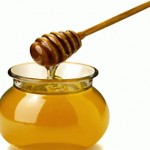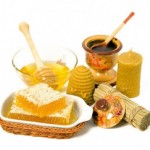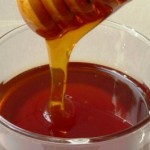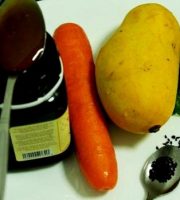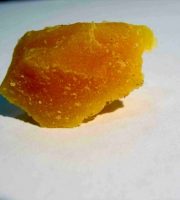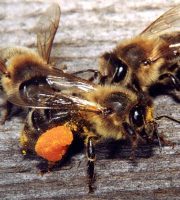Honey variety is great. Honey is originally divided into flower, honeydew, and mixed. Flower honey is distinguished on monophlore and polyphlore. Monophlore honey is made from the nectar of a major honey plants – linden, buckwheat, sunflower, acacia, etc. It is determined by the color, taste, appearance, smell, texture, dominant pollen content and other characteristics. Polyphlore honey is harvested from herbs. It is also divided into forest, meadow, prairie, fruit, mountain, taiga, etc. Honeydew honey is made from the excrement of insects. It is a dark honey with a weak odor. Compared with floral honey the honeydew honey has a weaker bactericidal properties. Regional name points republic, territory or area, where honey plants grow. And polyphlore honey is distinguished by place of collection (for example, mountain, prairie or meadow). Technological feature means the way of collecting and processing of honey: centrifugal, cell, cell sectioned, pressed. Thus, the centrifugal honey is obtained by pumping it from the comb on honey extractors, cell – in their natural packaging, perfectly clean and mature. Cell sectioned – honey in a special section, made of thin plywood or food grade plastic, section contains about 500 grams of honey. Pressed – wrung obtained: cells are getting worse. When rendering honey from the honeycomb the quality deteriorates. About quality of honey it is often judged by its appearance, smell, taste.
Different types of honey can be determined by the color, aroma and taste. It is distinguished light, medium and dark honey. Many varieties of honey differ by not only the main color, but also by a variety of shades. Honey varieties can be defined by its aromaticity. Some varieties of honey have a gentle, pleasant scent, but there are varieties of honey with a bad smell (tobacco, brown, etc.). Bees give many varieties of honey.
Barberry honey has a golden-yellow color, pleasant aroma and delicate sweetness. Bees vigorously process nectar of flowers from bushes of Berberis vulgaris. The ancient Babylonians and Indians knew about the healing properties of barberry and honey from it. It is used as a valuable styptic.
Valerian honey has the valerian aroma, sweet and pleasant taste. It has a pronounced sedative effect on the nervous system. Recommended for headaches, insomnia, palpitations, and pain in the stomach.
Cornflower honey is from cornflower blue (field). Honey is a greenish-yellow or light yellow, fragrant, has a pleasant taste with a slightly bitter aftertaste. Like the smell of almonds. Has excellent taste and medicinal qualities.
Heather honey has dark color with reddish or brown, has a pleasant taste and a smell. Very viscous, sets quickly, creating great difficulties in pumping it out of the combs. Heather honey may be irregular and complex, striped. For long term storage it does not crystallize, but it acquires the consistency of jelly. Contains a lot of protein and valuable minerals. For wintering of bees it is not appropriate.Recommended for people suffering from lack of appetite.
Blackberry honey. Bees make it from the nectar of flowers of blackberry bush, which grows everywhere. Blackberry honey is transparent like water, and has a pleasant taste.
Clover honey is collected from white clover or creeping. Honey from white clover has a light amber, has a unique flavor and aroma. One of the best light varieties. Crystallization is usually fine-grained, less coarse. Honey from clover pink is almost the same.
Maple honey has an amber color with a pink tinge, pleasant taste, specific flavor. Bees collect it from the yellow-green maple flowers, found in almost all the forests. One of the light varieties of honey with excellent taste.
Coriander honey is collected from the white or slightly pinkish flowers of valuable aromatic plant coriander (cilantro).Honey has a sharp aroma and specific taste.
Lavender honey belongs to the category of first-class, has a golden color and sweet flavor. Bees make honey from the nectar of this light-blue and blue-violet flowers of lavender essential oil plants.
Meadow honey is produced from the nectar of wild flowers (dandelion, broom, thyme, wild geranium, clover, alfalfa, savory, etc.). Color of honey – from golden yellow to dark brown. pH = 3.5. It has a pleasant aroma and distinct taste good. Has high nutritional and medicinal qualities. Has antimicrobial activity. If the honey nectar is from dandelion – then it is more saturated yellow. This honey has a soothing, anti-inflammatory and analgesic effect.
Alfalfa honey has various shades – from colorless to amber, has a pleasant odor reminiscent of peppermint. At relatively high temperatures almost crystallized.
Raspberry honey is from wild and garden raspberries. Honey has an excellent quality, white color, with a pleasant aroma, delicate flavor. Raspberry honey is very useful for colds.
Mint honey has the smell of the plant, color – amber to reddish. Honey mint contains a large amount of vitamin C. It crystallizes in small grains of light yellow color. It is used as cholagogue, sedative, analgesic and antiseptic. Particularly valued in Western Europe.
Sunflower honey is liquid, golden, quickly crystallizes and becomes a light amber, sometimes with a greenish or dark, has a tart flavor.Crystallization is coarse.
Rape honey has sometimes whitish yellow color, pleasant aroma, sugary taste. Honey is very thick, coarse grains crystallizes quickly sometimes in cells combs. Slightly soluble in water, during long storage is sour. This honey has bitter taste and the mustard flavor. It has good nutritional and medicinal qualities.
Ash honey is from the nectar of the flowers of mountain ash. Honey has a reddish color, strong aroma and good taste.
Pine honey has different kind of resinous flavor and aroma, dark color, the consistency is thick, coarse crystallization.
chicory honey by taste and external characteristics is similar to ordinary medical field. More obscure. Pleasant by eating. Has anti-microbial properties.
Blueberry honey has light color with a reddish tint, sweet taste, subtle aroma.
Sage honey has light amber color, very pleasant taste. Collection from the wild sage (oakwood) is negligible.
Eucalyptus honey is from the nectar, which is produced by large single flowers of Eucalyptus globulus – evergreen tree that grows in the subtropics. Eucalyptus honey is not tasty, but much appreciated, as is used in folk medicine, particularly for the treatment of pulmonary tuberculosis. The basic amount of eucalyptus oil is in the leaves, but there is, of course, in small quantities and in the nectar of flowers.
Apple honey has light yellow, yellow-brown color, good quality, nice subtle flavor. Fresh honey has a little bitter taste, but in storage bitterness disappears. pH = 3.5.
Honeydew honey is from light amber to dark brown (light from pine trees, dark – from leaf) color. The aroma is weak. Taste is sweet, less pleasant. Honeydew honey does not apply for the winter of bees. For people it can be used in food without restrictions. It is not only harmless, but also has high medicinal properties due to the increased number of minerals.Chromatographic analysis showed that honeydew honey contains raffinose, maltose, melezitose, sucrose, glucose, fructose, and 7 unidentified sugars. Free amino acids are alanine, arginine, aspartic acid, cystine, glutamic acid, glycine, histidine, leucine, lysine, methionine, proline, serine, threonine, tryptophan, tyrosine and valine. Minerals and dextrins are in large numbers in this honey, it has a beneficial effect on the cardiovascular and digestive systems. Some honeydew honeys have an unpleasant taste. They should be boiled for a few minutes and taste disappears, but and most of the medical properties. In Western Europe, honeydew honey is valued higher than the flower. In coniferous forests there is a high quality honey, which has the color, taste and aroma not inferior to the flower honey. Honeydew honey is harvested in the same way as the flower, but the packaging of contents have the inscription: “honeydew honey.”
Artificial honey . It is received by acidic (with citric or other organic acid) hydrolysis of cane or beet sugar, juice, melon, watermelon, grapes, etc. This is done by evaporation, until the mixture reaches the desired consistency.Watermelon, melon honey and other honeys can be made, pressing the pulp of fruits and vegetables, and then evaporating a lid. Evaporation continues until desired thickness. Mixture becomes yellow. Good product, obtained by this method is called artificial honey, which, of course, is not honey. According to the content of glucose and fructose it is similar to honey of bees. It has a specific aroma, sweet taste, contains a lot of carbohydrates, minerals and other nutrients. To make this honey more like a natural one, they add a synthetic honey essence. Sometimes add some natural honey, which has a strong odor (buckwheat, lime, coriander, grassy). For coloring of artificial honey are used brew tea, St. John’s flowers, saffron, etc. Honey has a very believable look and taste good, it is hard to identify. You can only detect fraud in the laboratory by the microscopic and chemical study. In the artificial honey water is no more than 22%, fructose and glucose – 48%, sucrose – 30%, no pollen, dextrin and the enzyme catalase. There is no preventive and therapeutic value of this honey. As a dietary product is very useful. Widely used in the confectionery industry.
Express (drug-vitamin) honey . This honey has medicinal and prophylactic purpose, the result of fast way in which the bee makes honey from medicinal syrups, vitamin syrups. Instead of natural nectar bees recycle 50% sugar syrup with added extracts of various herbs, fruit juices, vegetables, medicines, milk, fresh blood, vitamins, etc. 85 different kinds of medicinal honey were obtained from juices of various fruits and vegetables : carrot, apple, blood, milk, ginseng, medical (containing iron, calcium, phytin, streptocid, tireoidin, gepatokrin, ovarin, atofan, aminopyrine, antibiotics), multivitamin (containing vitamins B1, B2, C), etc. The results have shown that drugs, vitamins, stimulants in the resulting honey retain their therapeutic properties and, when using it in food, show the appropriate action. Vitamin honey is especially valuable because the stability of vitamins in other products, as you know, is very limited. In honey the vitamins are stored in the long term.
Popular varieties of honey.
Acacia honey is from acacia, very good in quality and taste properties. In the liquid state, it is transparent, has a pleasant taste and smell of acacia flowers. pH = 4.0. Has moderate antimicrobial properties. It is used as a general tonic, for insomnia, gastrointestinal, biliary and renal diseases. Honey from the nectar of flowers yellow acacia is very light in color, the crystallization becomes liquid, white (milk) in color, medium grain.This is the one of the best varieties.
Sweet Clover honey has a high taste and delicate aroma. Has white, sometimes light amber color. The taste is sweet, pleasant. Has a peculiar odor reminiscent of vanilla. Crystallization is normal, fine or coarse.
Linden honey . One of the best varieties of honey, has extremely strong and pleasant aroma, its own special flavor, which is easily recognized even in a mixture with other honey. Honey has white color , and sometimes quite clear, light amber, sometimes yellowish or greenish. In linden honey there are lysine and histidine. Contains 39.27% fructose and 34.96% glucose, pH = 3.7. Has strongly expressed nutritional and medicinal properties. Has a bright antibacterial action. Its antibacterial action appears relatively on gram-positive and gram-negative microorganisms, and on ciliates, amoebae and trichomonads. Contains volatile, non-volatile and low volatile antimicrobial agents. Has an expectorant, anti-inflammatory and mild laxative effect. It is used for sore throat, colds, laryngitis, bronchitis, asthma, as a heart tonic, inflammation of the gastrointestinal tract, kidney disease and biliary diseases. Has good local action with festering wounds and burns (wound or burn must be lubricated with honey).
Chestnut honey is light, but from edible chestnut – a dark color. pH = 3.0. Has very delicate, bitter, foul taste, quickly crystallized. Refers to the low-grade honeys. It has good antimicrobial properties. Recommended for gastrointestinal and renal diseases.
Buckwheat honey is dark yellow with a reddish tinge, sometimes almost brown, but always clear. Has a distinctive aroma and special flavor, “stings the throat.” In the crystallization becomes a mass of different granularity. Contains 36-37% glucose and 40-42% levulose, more proteins and especially iron, than lighter grades of honey. Recommended for the treatment of diseases related to blood.
Rare varieties of honey .
Borage honey. When pumping it has a light yellow or amber color, very aromatic, tastes like cucumber.
Willow honey is collected from flowers of different trees and shrubs of willows. Willow honey has an amber or golden color, crystallization is grained with cream shade. It has a good taste. Harvested by bees in early spring and is usually consumed in the bee family, but strong families, occupying 10-11 streets, or specially designed family can make 20-80 lbs of this honey.For wintering of bees is unsuitable.
Carrot honey – a dark yellow color with a pleasant aroma. Bees do it from the nectar of fragrant white flowers of carrots.
Dandelion honey has rich golden-yellow color, very thick, viscous, crystallizes rapidly, with a strong smell and a sharp “burning” taste. This honey is from the nectar of the well-known and widespread weeds – dandelion. Honey contains 35-36% glucose, 41-42% fructose.
Tobacco honey is produced in areas where tobacco is cultivated. Honey color is from light to dark brown. pH = 3.0. It has a specific “bouquet”, flavor of tobacco, so do not eat it. Is used in the tobacco factories for flavoring tobacco. Immature (unsealed) honey has toxic properties, which can be removed by heating. Quite suitable for feeding bees during winter.
Pumpkin honey is from the nectar of flowers of pumpkins, zucchini. It has a golden yellow color, with pleasant taste, crystallizes rapidly.
Tulip honey is collected from flowers of beautiful decorative tulip tree, which is a good honey plant, because it contains the greatest number of nectar compared to other sub-tropical honey plants. Honey has a reddish color, which has a pleasant flavor and good taste.
Poisonous honey . First, poisoning honey was described by the ancient Greek leader and writer Xenophon in his “The retreat of 10,000 Greeks.” His soldiers were poisoned by honey from poisonous plants in Asia. A few days later they were all healthy, none died. The first signs of poisoning appear after 20 minutes-2 hours after eating poisonous honey. Weak and emaciated people have very rapid poisoning phenomena. Itching of the body, stiffness, vomiting, possible loss of consciousness, pulse becomes weak, slow down to 50, even up to 30 beats per minute, almost disappears. A person becomes a transparent blue, breathing is labored. The skin is covered with cold sweat. All this is going from 4 hours to a day. Poisoning occurs because of the damage of central nerve system and the parasympathetic part of the autonomic nervous system. An effective way to neutralize the poisonous honey – heating it to a temperature of 45-50 ° C (113 F), so poisonous substances are destroyed, but the taste is saved.

